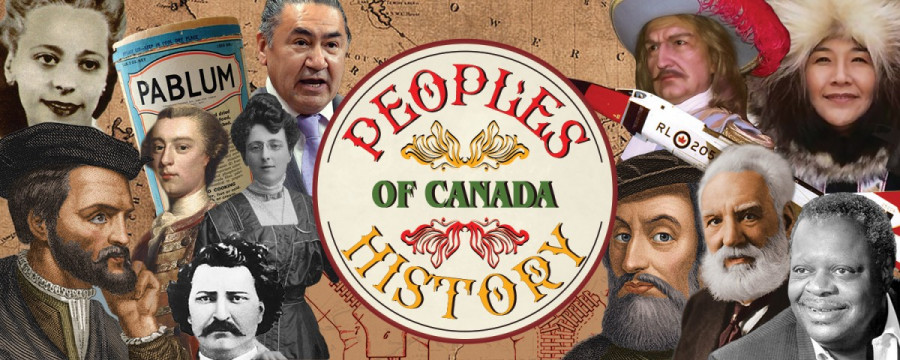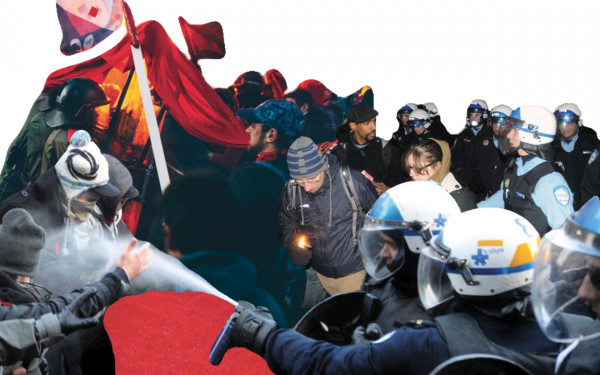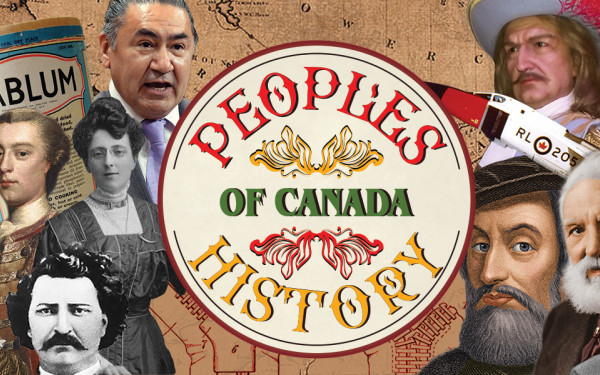The Order of Grey Nuns Facilitated Child Kidnappings
A Peoples’ History of Canada Column
If Concordia students are familiar with the Grey Nuns, it’s probably because of the charming residence that bears their name.
But there’s also a dark past involving the Grey Nuns of Montreal—it was one of the various religious orders responsible for what came to be known as the tragedy of the Duplessis Orphans.
In the 1930s the Grey Nuns hid execrable secrets behind its charitable facade. Investigations have since revealed that the ex-convent was host to numerous crimes.
The building we now call Grey Nuns was host to countless atrocities perpetrated upon wards of the state settled there. Hundreds of thousands of children were physically and sexually abused, purposefully misdiagnosed with mental disabilities, and tortured for financial gain.
These children became known as the Duplessis Orphans. Several decades after the tragedy, some of the survivors formed the Duplessis Orphans’ Committee and filed a class action lawsuit against the government and church to seek reparations. Due to the cruelty they had to endure, many have been unable to lead healthy adult lives. Scarce reparations have been accorded, but the meager amounts have only left them further aggrieved.
The story of the Duplessis Orphans takes place in an era known as La Grande Noirceur, or The Great Darkness. Poverty was widespread from the Great Depression and conservative values dominated the political sphere. Spearheading this political force was premier of Quebec Maurice Duplessis with strong support from the Roman Catholic Church.
During his time in power from the mid-1930s to the late 1950s (with one break where the Liberals re-took power), Duplessis transferred power to the Church by extending their responsibilities to include operation of most social services like orphanages. This gave the Church authorization to act as a government-sponsored agency—minus any form of public accountability.
At the time, federal funding allocated $0.70 to $1.25 per day, per orphan to the church. If an orphan was mentally disabled, they received $2.50 in subsidies. This precipitated a mass scale process of proliferating “orphans” and intentionally misdiagnosing them as mentally disabled to qualify for the larger subsidy.
In many instances, the children recruited weren’t legitimately orphaned. Nuns and priests would travel to low-income neighborhoods throughout Quebec and Eastern U.S. and convince parents to hand over their children, promising them a better future.
Bernard Piché, a doctor who falsely certified the orphans as mentally disabled, admitted to not examining any children in 1999. In a statement, Piché said, “I did it because the nuns asked me to.”
Religious orders converted orphanages into psychiatric hospitals in order to maximize fiscal gain. An investigative report done by social activist Léo-Paul Lauzon revealed the finances of the scandal. The study concluded that the government and Roman Catholic Church were recipients of over 70 million in subsidies and in one instance saved 37 million by converting one of its orphanages into a mental hospital.
Multiple ombuds said the investigation proved difficult due to the lack of existing documents. Thousands of files regarding patient identities and communication channels were missing. However, some survived.
The surviving orphans’ class-action lawsuit mentions a Quebec government authorized investigative report contained evidence of ice baths, torture, beatings, and other forms of abuse. The petition includes a quote from an involved psychiatrist saying “orphans died from psychiatric treatments and that these treatments were nothing more than sadistic pseudo-treatments.”
Nuns and priests would travel to low-income neighborhoods throughout Quebec and Eastern U.S. and convince parents to hand over their children, promising them a better future.
Multiple testimonies from surviving Duplessis orphans describe similar experiences. In a New York Times interview from 1999, an orphan recounted being put in a straitjacket and tied to a bed frame for weeks on end, surviving from the food she was force fed. Her abuser was said to be a sister belonging to Grey Nuns of Montreal, one of the religious orders repeatedly brought up in the class action lawsuits.
Rod Vinneau, a spokesperson for the Duplessis Orphan Committee spoke about the atrocities that occurred during this time in an interview in 2016. He says the hospitals built to facilitate the torturing of children were under the rule of the American Psychiatric Association and C.I.A.
The matching testimonies of the Duplessis orphans being tortured with electro-shock therapy, forcible injections with powerful drugs and other human experimentation raises serious concern that this tragedy was part of MK Ultra—a US government program which honed torture techniques and had a known human-experimentation centre in McGill University.
Sylvio Albert Day, a Duplessis Orphan, says that one of the priests was Joseph Mengle, a former Nazi doctor during World War II. Day’s job was to transport dead bodies into unmarked graves. Some of these bodies had to be cleaned because in 1942 Quebec law allowed nuns to sell unclaimed bodies to medical schools for $10.
A lawyer representing the Duplessis Orphan Committee filed a motion to have an abandoned graveyard dug up. The committee believed thousands of orphans were buried at this site and forensic testing could provide evidence of torture and medical experimentation. Despite over two thousand bodies being discovered, no report on forensic study was released, or even occurred in the first place.
Later that year in 1999, the Quebec government offered $15,000 to each orphan that was misdiagnosed, which was the government’s first financial response to the allegations. This settlement was rejected and heavily criticized, especially because the lawyers on behalf of the government were paid over $1,000 a day.
In 2001, 1,100 of the remaining Duplessis Orphans accepted a $25 million settlement. This amounted to approximately $10,000 plus $1,000 for every year they were wrongfully detained and incorrectly diagnosed. This settlement was not eligible for those that were abused but not misdiagnosed. In negotiating the settlement, each recipient had to sign an agreement that they would not pursue the Roman Catholic Church for further compensation and prosecution.
Some of the Duplessis Orphans did not accept the settlement on principle and continue fighting for justice. Much of the evidence presented during the trial was obtained with strong resistance from the government and Church. Even though financial compensation was earned, the committee believed it wasn’t enough.
While many of the individuals involved in the abuse of orphans have likely passed away, the institutions which governed it and shielded its perpetrators remain strong—and, in the Church’s case, mired in more abuse allegations. Justice, in this case, will look like holding these institutions accountable for the crimes they perpetrated.
Although this outcome seems impossible, like all activism, it is worth fighting for.


_600_832_s.png)



_600_375_90_s_c1.jpg)
